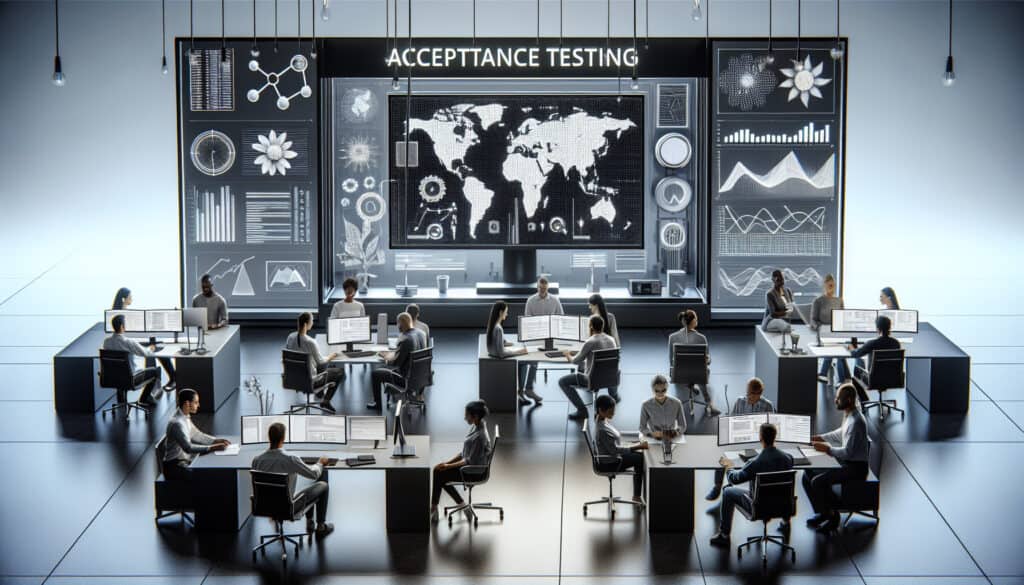A type of testing performed to determine if the requirements of a specification or contract are met.
- 方法: 人体工程学
Acceptance Testing

Acceptance Testing
- 敏捷方法论, 质量保证, 质量控制, 软件测试, 用户体验(UX), 用户测试, 验证, 验证
目标
如何使用
- It is a formal testing process conducted to determine whether a system satisfies its acceptance criteria and to enable the user, customer, or other authorized entity to determine whether to accept the system.
优点
- Ensures the software meets user needs, validates business requirements, and increases the chances of successful adoption.
缺点
- Can be time-consuming, requires significant user involvement, and may be difficult to define clear acceptance criteria.
类别
- 产品设计, 项目管理, 质量
最适合:
- Verifying that a system is ready for deployment and meets end-user expectations.
Acceptance Testing is particularly valuable in various phases of product development, especially in industries such as software engineering, telecommunications, healthcare, and aerospace, where user satisfaction is paramount. This methodology can be initiated as part of the final stages of software development or after the integration of new features, ensuring that the system aligns with user requirements before it is deployed in a live environment. Typical participants in this testing phase include end-users, product managers, quality assurance teams, and stakeholders who directly influence the acceptance criteria. During this phase, testers execute previously defined test cases that reflect real-world usage scenarios, allowing them to assess not only functionality but also usability aspects. For instance, in a healthcare application, acceptance testing may involve doctors and nurses using the software in simulated clinical environments to ensure it fits seamlessly into their workflows. A robust acceptance testing process also provides an opportunity for discovering unanticipated issues, thus promoting an iterative feedback loop that enhances system reliability. By addressing any discrepancies between user expectations and the system’s performance, organizations can significantly reduce the risk of deployment failures and increase user confidence, which is essential for maximizing the adoption rate of new systems. This practice lays the groundwork for a positive user experience and can lead to improved customer satisfaction and loyalty, paving the way for future projects and enhancements.
该方法的关键步骤
- Define acceptance criteria based on user needs and business requirements.
- Develop acceptance test cases that cover all functional and non-functional aspects of the system.
- Execute acceptance tests under real-world conditions or simulated environments.
- Collect feedback from testers regarding system performance and usability.
- Identify and document any discrepancies or issues against the acceptance criteria.
- Verify that all identified issues have been resolved and retest as necessary.
- Obtain final approval from the user or customer after successful validation of acceptance criteria.
专业提示
- Incorporate end-user feedback loops early in the acceptance testing process to iteratively refine acceptance criteria and identify potential usability issues.
- Align acceptance testing activities with the organization's strategic objectives to ensure that the delivered solution supports broader business goals and user outcomes.
- Utilize automated testing tools where applicable to increase efficiency and accuracy in validating key acceptance criteria under varied scenarios and conditions.
历史背景
1962
1970
1972
1980
1980
1986
1986
1960
1963
1970
1980
1980
1980
1986
1987
(如果日期不详或不相关,例如 "流体力学",则对其显著出现的时间作了四舍五入的估计)。















相关文章
制造运营管理(MOM)
制造执行系统(MES)
生产控制计划
人工测试
手动搬运评估表 (MAC)
手动任务风险评估工具(ManTRA)